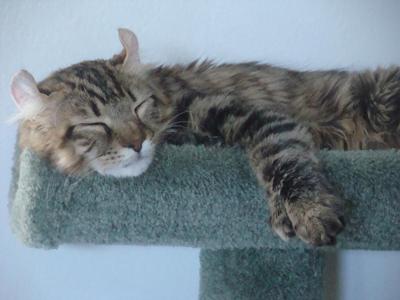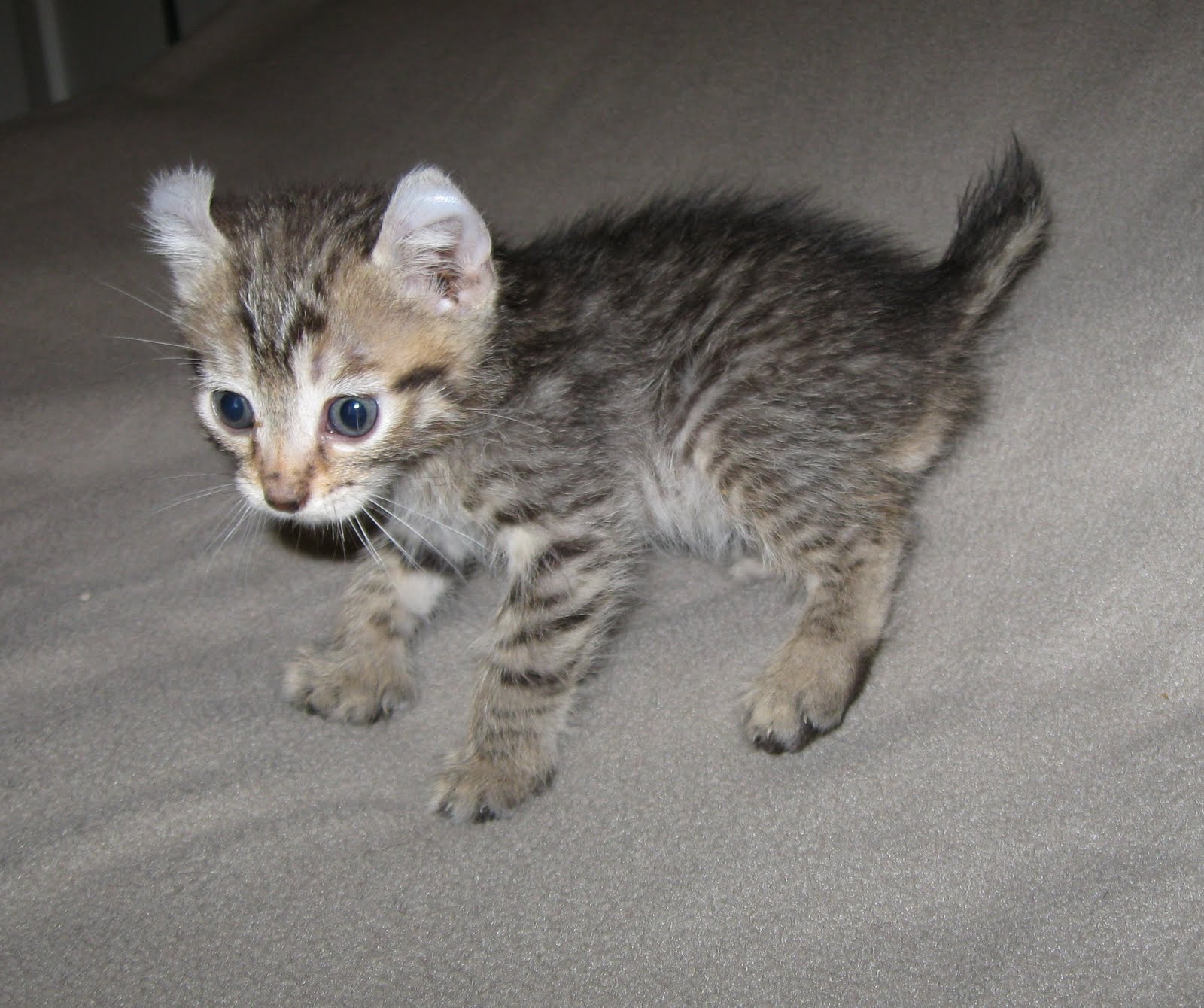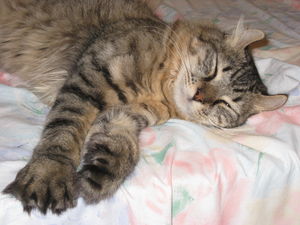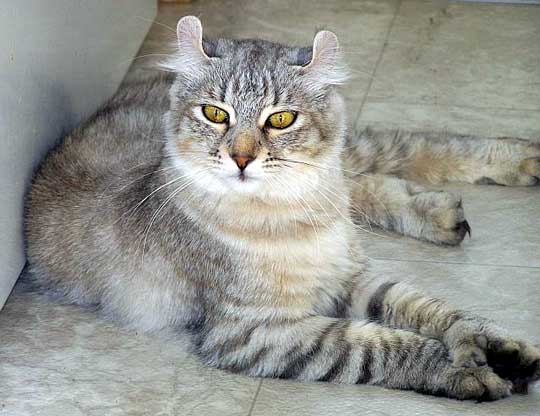



|
Highlander Description
A substantial cat, the Highlander brings together the sweeping grace of the curl eared cats, and the massive size of the lynx. Completely domestic, this massive feline averages a weight of fourteen pounds and is a masterful combination of strength and graceful beauty. The head should be an inverted pear shape with medium to large ears that are firm at the base and flexible at the tips. They should be in a relaxed curl of no more than 90 degrees. Ear furnishings and tufts are ideal. Eyes should be medium to large and wide set, resembling a flattened oval in shape. The body is medium to large in size, rectangular in shape and athletic in appearance. Legs should be medium in length, with back legs longer than front. Feet should be medium to large and round with large knuckles; long coats should have toe tufts. The tail should be short and thick, a minimum of one inch long in adults but not extending past the hock. The coat can be short or long and comes in four colors: solid, tortie, tabby, or silver/smoke.
Highlander Temperament
Despite their regal appearance, Highlanders are definitely the court jesters. This is a highly active breed that loves to play chase. Affectionate, they will be first to greet you at the door and will happily show off to visitors. Relatively quiet, this is a soft-voiced animal with few needs and lots of love.
Highlander Care
This is a low maintenance breed of cat. General care should be taken when purchasing any kitten from a breeder to check for hereditary diseases and disorders and potential owners should have any kitten examined by their vet before purchasing. Regular grooming is recommended for long haired cats. There are no special nutritional needs.
Highlander History
This is a new breed to appear on the cat fancy scene. Breed development began in 2004 and it's starting name was the Highland Lynx, a name that easily described the size of the cat that was desired. The breed has been developed from the large domestic gene pool, and though the ears resemble those of the American Curl, the Highlander does not receive its ear curl from that same gene. The Highlander is a TICA recognized breed and was accepted for competition in the New Breed class in May of 2008.
|